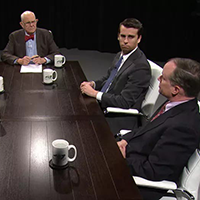A strategic imperative: Elevate communication in higher education
Published 4:50 p.m. yesterday
Written by: Stephanie Mahin, PhD and James H. Johnson, Jr., PhD
“I need workers who can groove on ambiguity and keep the alligators off my back!” — sanitized quote from a major firm CEO.
CHAPEL HILL (November 13, 2025) – In today’s polarized, uncertain, and resource-constrained environment, colleges and universities face a convergence of challenges: declining public trust, financial strain, political scrutiny, and shifting student and employer expectations.
To thrive, institutions must treat business and professional communication not as a soft skill but as a core operating asset—the infrastructure that allows leaders, faculty, staff, and students to perform effectively amid turbulence.
Communication as Performance Infrastructure
Communication is not fluff. It is performance infrastructure. Research shows that more than three-quarters of a leader’s time is spent communicating—and top performers treat it as essential as strategy or finance. Just as a building depends on its structural systems to stand, organizations rely on communication to lead, align, and engage, especially in uncertain times. Yet, too often, communication is treated as an elective rather than a foundation.
Employers—from Fortune 500 CEOs to startup founders—consistently cite communication as the most critical career skill. They seek graduates who can think strategically, write clearly, speak persuasively, adapt to diverse audiences, and build trust across lines of difference. These abilities are fundamental to navigating today’s unpredictable social and organizational terrain.
By embedding advanced communication capabilities into the fabric of institutional life, higher education can:
•Strengthen reputational equity as agile, adaptable, and trustworthy institutions.
•Enhance brand recognition for producing graduates who add strategic value.
•Equip students and employees to lead with clarity and empathy.
•Prepare institutions to operate more effectively in a world defined by uncertainty.
Leadership and Communication Skills for Turbulent Times

The Communication Capacity Framework
To make business and professional communication a true differentiator, institutions need a comprehensive program that integrates leadership development, pedagogy, and student preparation. We envision three core components:

This model mirrors the “master-teacher” approach used in several international education systems, where expert educators mentor others to elevate institutional communication capacity.
The Payoff
When higher education embeds communication as core infrastructure, the benefits are broad and measurable:
•Enhanced Visibility: Clear, consistent institutional narratives across departments and channels.
•Stronger Talent Pipelines: Faculty and staff who model effective communication for students.
•Improved Retention and Leadership Development: Mid-level leaders supported through coaching and peer networks.
•Increased Career Readiness: Graduates who demonstrate presence, trust-building, and storytelling skills.
•Expanded Donor and Alumni Engagement: Institutions that articulate their impact and innovation with clarity and authenticity.
The New Imperative
The call for graduates who can “groove on ambiguity” is louder than ever. In an era defined by social fragmentation, rapid technological change, and complex stakeholder demands, communication is the connective tissue that holds institutions together. By making business and professional communication a central operating asset, higher education can move beyond survival to strategic relevance—preparing both leaders and learners to thrive amid uncertainty.
About the Authors
 Stephanie Mahin, PhD is a clinical associate professor of management and corporate communication at the University of North Carolina at Chapel Hill’s Kenan-Flagler Business School. (stephanie_mahin@kenan-flagler.unc.edu)
Stephanie Mahin, PhD is a clinical associate professor of management and corporate communication at the University of North Carolina at Chapel Hill’s Kenan-Flagler Business School. (stephanie_mahin@kenan-flagler.unc.edu)

James H. Johnson, Jr., PhD is the William Rand Kenan, Jr. Distinguished Professor of strategy and entrepreneurship at UNC-Chapel Hill’s Kenan-Flagler Business School. (johnsonJ@kenan-flagler.unc.edu)







